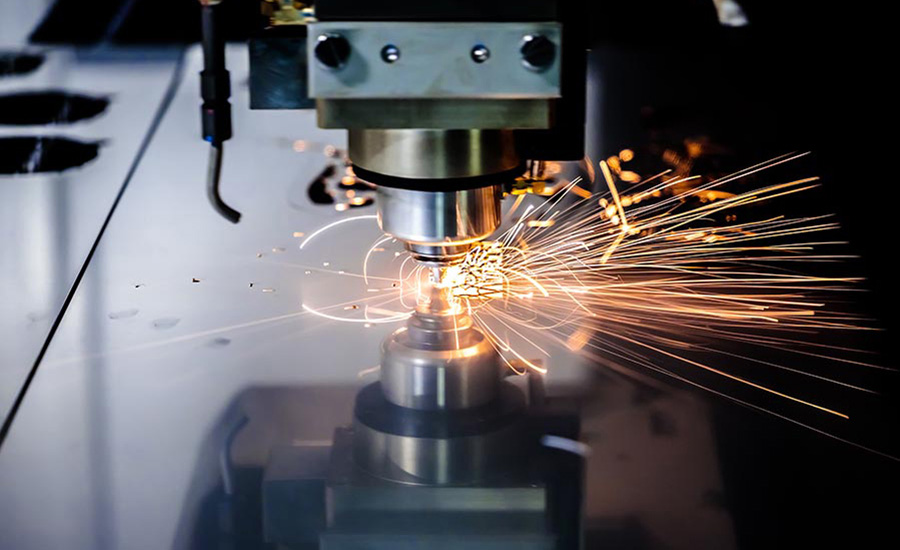Cutting sheet metal into intricate forms or patterns using a laser is a fantastic alternative. Laser cutters have a significant advantage for processing metal sheets due to their precision, repeatability, speed, and contactless cutting process. But how does laser cutting of metal work? Is there a laser designed specifically for sheet metal applications? Is it worthwhile to switch to laser cutting for the processing of metal?
Laser cutting is a digital manufacturing process that uses 2D vector data. The laser resonator that makes up the body of the laser cutter can either include a gas combination of a crystal body or glass fibers, depending on the cutting procedure. Energy is first delivered to the mix before being focused by a laser through various mirror lenses to begin the cutting process.
The laser beam is directed to the substance through a nozzle with the help of a set of mirrors. The substance in the form of the vector file is vaporized when it comes into contact with the surface. The kerf, a portion of the material that the laser melts, must be considered while creating your design. Each page of our documents has all the necessary information.
Different Types of Laser Cutting
Manufacturing businesses have access to a wide variety of laser cutters. Each kind has benefits and qualities that make it more suitable for particular materials. Gas, fiber, and crystal models are the three most common laser cutters utilized in diverse sectors.
More details on these three primary categories of laser cutting equipment are provided below:
Crystal Laser Cutters
Two crystals, neodymium-doped yttrium aluminum garnet, and neodymium-doped yttrium orthovanadate are combined to create powerful beams in crystal lasers. Their high-intensity beams make them ideal for cutting dense, rigid materials. The primary drawback of this laser is that it frequently breaks down due to its increased power. Metals, polymers, and even ceramics are materials that these laser cutting equipment can cut.
Fiber Laser Cutters
An optical fiber doped with various rare elements, such as thulium, holmium, praseodymium, dysprosium, or erbium, is used to create a laser in a fiber laser cutter. To create a strong cutting beam, the doped optical fiber combines and condenses laser diodes. Fiber versions are significantly more energy-efficient than gas laser cutters and can cut shiny materials without the worry of back reflections. They also last longer than crystal lasers, cost less to maintain, and are more affordable. Metals and polymers may be sliced with fiber laser cutters.
Gas Laser Cutters
Gas laser cutters, often known as carbon dioxide (CO2) lasers, use electrically stimulated CO2 to cut material. Compared to fiber lasers, they can cut through denser materials. This laser’s ability to produce a smoother finish while cutting heavy materials is a significant benefit. Since they can cut a variety of materials and are both affordable and effective, they are the most widely used sort of laser cutter. Glass, leather, wood, acrylic, paper, certain foams, and some plastics can all be cut using gas lasers.
Why Choose Laser Cutting for Metal Work?
For projects involving the manufacturing of sheet metal, there are several reasons why a manufacturer could decide to employ laser cutting instead of alternative cutting techniques, including:
Faster and More Efficient
Depending on the material and component design, laser cutters have a cutting speed range of 20 to 70 inches per minute. However, employing multiple or multi-head lasers will speed up the cutting process. High process efficiency is also achieved since the equipment may run continuously without operator supervision. These characteristics enable laser cutting for metal work to create components and products significantly more quickly than conventional cutting techniques.
More Precision and Accuracy
Most laser cutting for metal work incorporates CNC technology, allowing it to create goods and components to precise tolerances with little to no fluctuation from batch to batch. This characteristic guarantees that manufacturers can produce parts in low or large numbers that call for delicate and sophisticated cutting. Furthermore, post-cut deburring is frequently unnecessary for the cut edges since the laser melts the material rather than cuts it.
Lower Prices
Laser cutting for metal work frequently delivers cheaper labor costs because laser cutting equipment quickly accepts automation. In addition, as lasers are less likely to wear out than conventional cutting tools, the prices of replacing tools and equipment are also not too high.
Exactly How Precise is Laser Cutting?
When compared to other conventional sheet metal cutting methods, laser cutting is a procedure that is effective, safe, and incredibly exact. Computer-controlled software is used in the laser-cutting procedure to precisely cut materials within a reasonable accuracy range.
Additionally, CAD software that directs the laser to produce its cuts may be incorporated into the laser-cutting process. A quarter of a human hair’s width, or around 25 microns, is the ideal cutting range for lasers. Moreover, a cut width of fewer than 0.001 inches is possible. However, the dimensional precision is often entirely accurate, measuring around 0.0005 inches.

